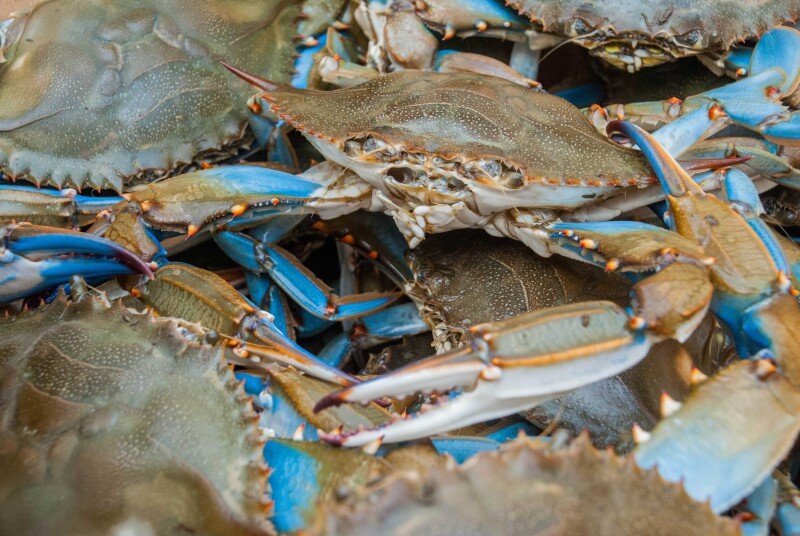The debate over North Carolina’s blue crab fishery is heating up as state regulators float new restrictions to stem what they call a long-developing population decline. But commercial crabbers say that the state’s data is outdated and doesn’t reflect what they’re seeing on the water.
At the center of the issue is a proposed revision to the state’s Blue Crab Fishery Management Plan. Officials with the N.C. Division of Marine Fisheries (DMF) say catch numbers have been falling for more than a decade, raising red flags about the future of North Carolina’s most valuable fishery.
In 1996, Tar Heel crabbers landed more than 65 million pounds of blue crab valued at nearly $40 million. By 2022, that figure had dropped to a historic low of 9.1 million pounds, according to DMF data. While 2023 saw a slight rebound to 15.3 million pounds, the trendline remains well below historical averages. According to StarNews Online and reporter Gareth McGrath, the proposed measures could reduce crab landings by 21 percent compared to recent years.
“Our goal is a sustainable harvest by 2030,” said Robert Corbett Jr., a DMF biologist, in a recent press release. “Maybe we’re harvesting too many crabs- or at least too many female crabs.”
The draft amendment recommends seasonal closures and trip limits, including a potential ban on catching mature female crabs from January through May, and a bushel limit from June through December.
But crabbers and coastal communities aren’t sold.
At issue is the science behind the plan, specifically, the use of stock assessment data from 1995 to 2016. According to McGrath and StarNews, critics argue that the data doesn’t account for more recent environmental factors like climate change, water quality issues, and natural population swings.
“Without an updated stock assessment, we don’t have a number that we can shoot for and say we believe these steps will lead to these results,” Corbett said. While a new assessment is possible, he noted it could take years and called the task “daunting.”
Advisory committees along the coast have urged the state to wait for a new stock assessment before implementing changes that could threaten the livelihoods of working crabbers.
The blue crab fishery is not only a cultural cornerstone of North Carolina’s coastal communities but a vital part of its economy. The state consistently ranks fourth nationwide in blue crab landings, behind Louisiana, Maryland, and Virginia. For those who rely on it, more regulations, without updated science, feel like another hit to a fishery already grappling with aging infrastructure, imported competition, and regulatory hurdles.
Dr. Louis Daniel, former DMF director and now a senior marine scientist at the N.C. Wildlife Federation told McGrath that North Carolina’s current approach may not go far enough to secure the fishery’s future.
“We’re not erring on the side of caution,” Daniel said. “We’re erring on the side of minimizing the economic impact.”
The revised proposal will be submitted to the N.C. Marine Fisheries Commission in May. The commission may open the draft for public comment or delay a decision while considering new information.
Crabbers across the coast are left waiting and worrying.







